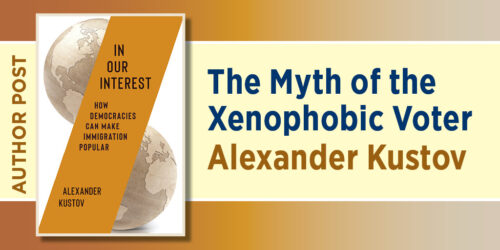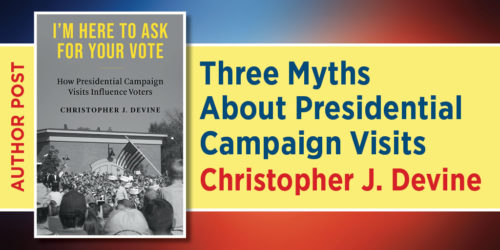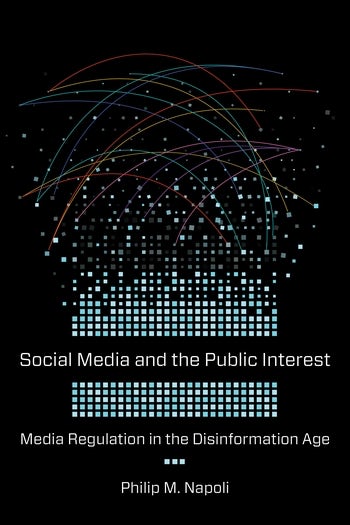The Subtle Art of Messaging:
How Far-Right Women Use Social Media to Shape Public Opinion
Eviane Leidig

“Using your baby to virtue signal alliance with a violent political movement is a new low for white women.” This is how a far-right woman influencer describes a photo of a woman holding her baby in a carrier at a Black Lives Matter protest in an Instagram Story. Ironically, this same influencer’s Instagram profile contains a constant stream of photos of her own children with captions advocating for the joys of motherhood and aiming, in her own words, to “share and promote family life and motherhood.” She justifies this choice by stating that “we on the right wing, we need more visual representation of happy, family-oriented, healthy, traditionally minded people.” This visual representation is far-right propaganda, and far-right women are using children as props for the movement. When we think of women’s political activism, often what comes to mind are images of progressive feminist movements. However, there is a long history and legacy of conservative women’s activism that is less visible but equally important in shaping the American political and public sphere.
With the upcoming U.S. presidential election in November, issues concerning women’s reproductive rights and moral panics about transgenderism will be hotly debated. But how did these topics gain political salience at the national level in the first place? In my book, The Women of the Far Right: Social Media Influencers and Online Radicalization, I demonstrate that far-right women have been at the forefront of legitimizing and normalizing extremist ideas regarding gender roles, racism, and conspiracies for mainstream appeal.
Less ostentatiously placed, however, are the articulate, attractive, and college-educated young women spreading conspiratorial narratives of population replacement online.
The success of far-right women influencers—that is, leading online personalities shaping and popularizing ideas within the far right—can be traced back to the origins of their political activism in the run up to the 2016 election and Trump presidency at the peak of the so-called alt-right. The stereotypical image of the alt-right was conjured during the 2017 Unite the Right rally in Charlottesville of young white men in polo shirts and khaki pants holding torches and shouting “You will not replace us.” Less ostentatiously placed, however, are the articulate, attractive, and college-educated young women spreading conspiratorial narratives of population replacement online. Like their male counterparts in the alt-right, these women served as political commentators or offered opinions on current events. In addition, they would specifically reflect on gender- and sexuality-related topics such as antifeminism, heteronormative family structures, society’s “war” on men and masculinity, and representations of LGBTQ+ individuals as social degenerates and pedophiles. Although the alt-right fragmented by the end of Trump’s presidency, many of the ideas and discourses popularized by its influencers have become arguably successful, to the extent of becoming mainstreamed into legislation. Today, the GOP operates at the helm of MAGA politicians who seek to implement the proposals initially set forth by alt-right activists nearly a decade ago, not least restrictions on abortion, banning sex as well as gender and sexuality education in classrooms, and enacting draconian immigration policies.
Women in the far right are crucial messengers to relay these talking points to broad audiences. They spew hate speech about “gender ideology,” which is framed as a biologically driven, maternalist desire to protect the innocence of children. Or spread disinformation about the COVID-19 vaccines’ harmful effects on fertility that resonates with women’s negative experiences of gaslighting by the medical establishment and systematic underinvestment in women’s health. By focusing on these cultural and social issues, far-right women strategically engage in metapolitical activism, with the aim to slowly change public consciousness toward favoring a far-right agenda. They sow seeds of doubt and distrust in government and media institutions, “exposing” the truth behind cover-ups and orchestrated plots in conspiratorial terms.
A key component toward understanding the success of far-right women influencers is their appropriation of practices, genres, and norms of preexisting online communities to convey their propaganda.
A key component toward understanding the success of far-right women influencers is their appropriation of practices, genres, and norms of preexisting online communities to convey their propaganda. For example, offering self-help and motivational advice for young women seeking personal improvement by describing their radicalization stories through the lens of finding self-confidence; thus, influencers mask a hateful ideology and political movement through narratives of purpose. Other times, influencers draw upon health and wellness trends by collaborating with sponsors on product promotion to not only monetize their content but simultaneously “sell” a lifestyle and ideology to their followers. Furthermore, posting banal, daily snapshots of domestic activities, like cooking dinner for their family or gardening with their children, denotes qualities of being relatable, accessible, authentic, and responsive, which establishes networked intimacy with followers and creates a perception of audience engagement. Woven through these social media posts are coded language, dog whistles, and symbols to indicate extreme political beliefs.
The type of influencer practices used by far-right actors has a significant impact in terms of exposure and visibility to mainstream audiences. Whereas many prominent male leaders in the far right have been systematically banned from mainstream social media platforms, women in the far right continue to enjoy a position of prominence, including verified accounts. This is largely due to the fact that far-right women influencers do not evidently violate community guidelines of platforms (unlike the incitement to violence by far-right men that generates almost immediate deplatforming measures). Instead, by framing their message in soft, “feminine” ways in which the ideological conviction is subtle and coded, far-right women occupy a gray zone of what is considered acceptable discourse on platforms.
Big Tech companies have announced the steps they will take to moderate content during the world’s biggest election year, with a focus on AI-generated content and investment in fact-checking resources. But far-right actors have long been spreading false and harmful information that proliferates on social media platforms without enforcement. Particularly when such content is cloaked in coded language that is considered apolitical in nature, far-right women can easily bypass moderation systems and detection tools while still promoting their political agenda. The far right continues to exploit these gaps in content moderation, and it is likely that they will continue to do so this election season.
Eviane Leidig is a Marie Skłodowska-Curie postdoctoral fellow at Tilburg University and the author of The Women of the Far Right: Social Media Influencers and Online Radicalization.
Categories:Author-Editor Post/Op-EdGender StudiesPhilosophyPoliticsSociologyWomen's History MonthWomen's Studies
Tags:Election 2024Eviane LeidigFar Right Influencersfar-rightGender IdeologyHealth MisinformationInform Your Votemetapolitical activismOnline RadicalizationpropogandaSocial Mediasocial media influencersStay InformedThe Women of the Far RightWomen's History Month 2024








